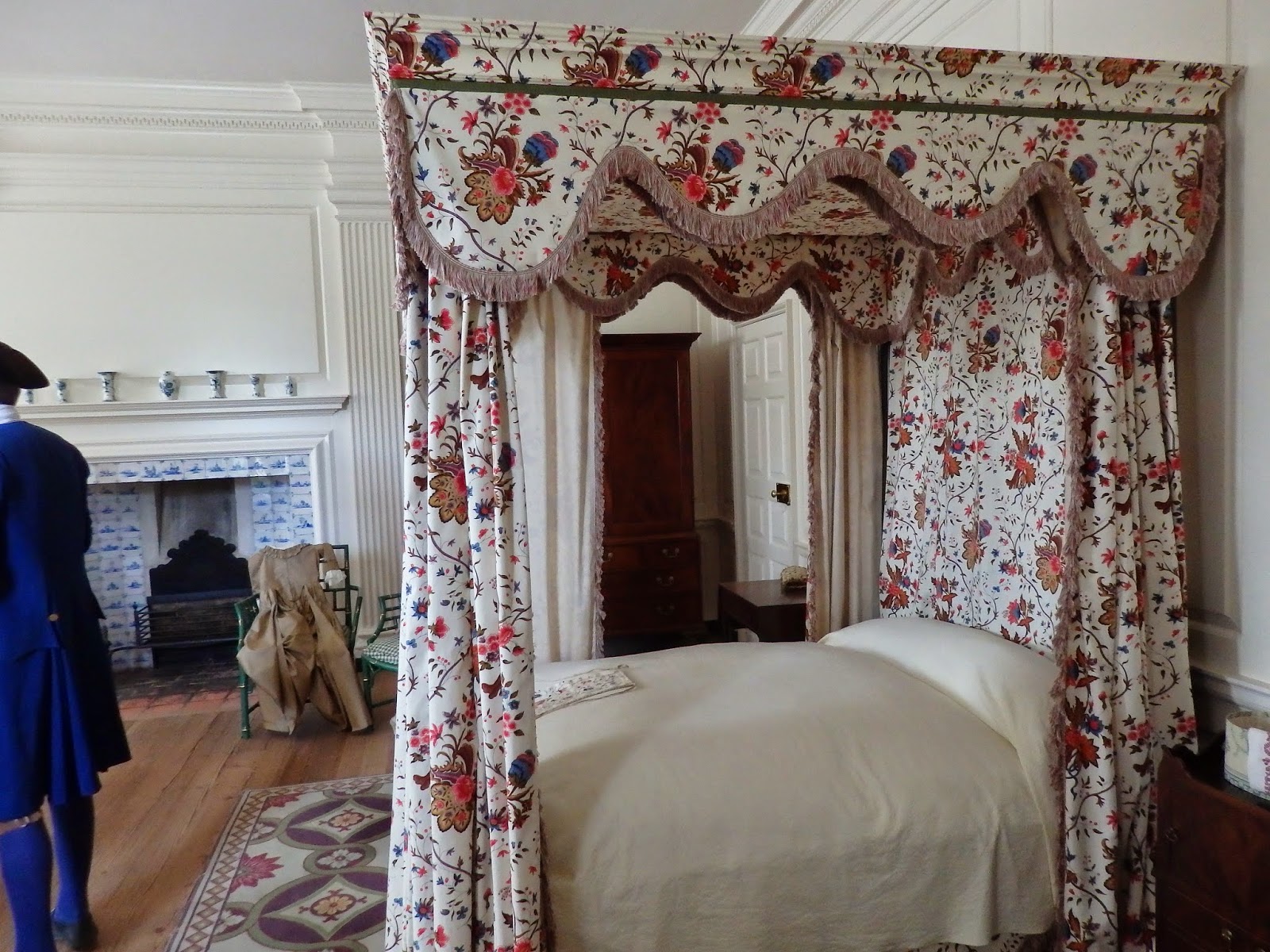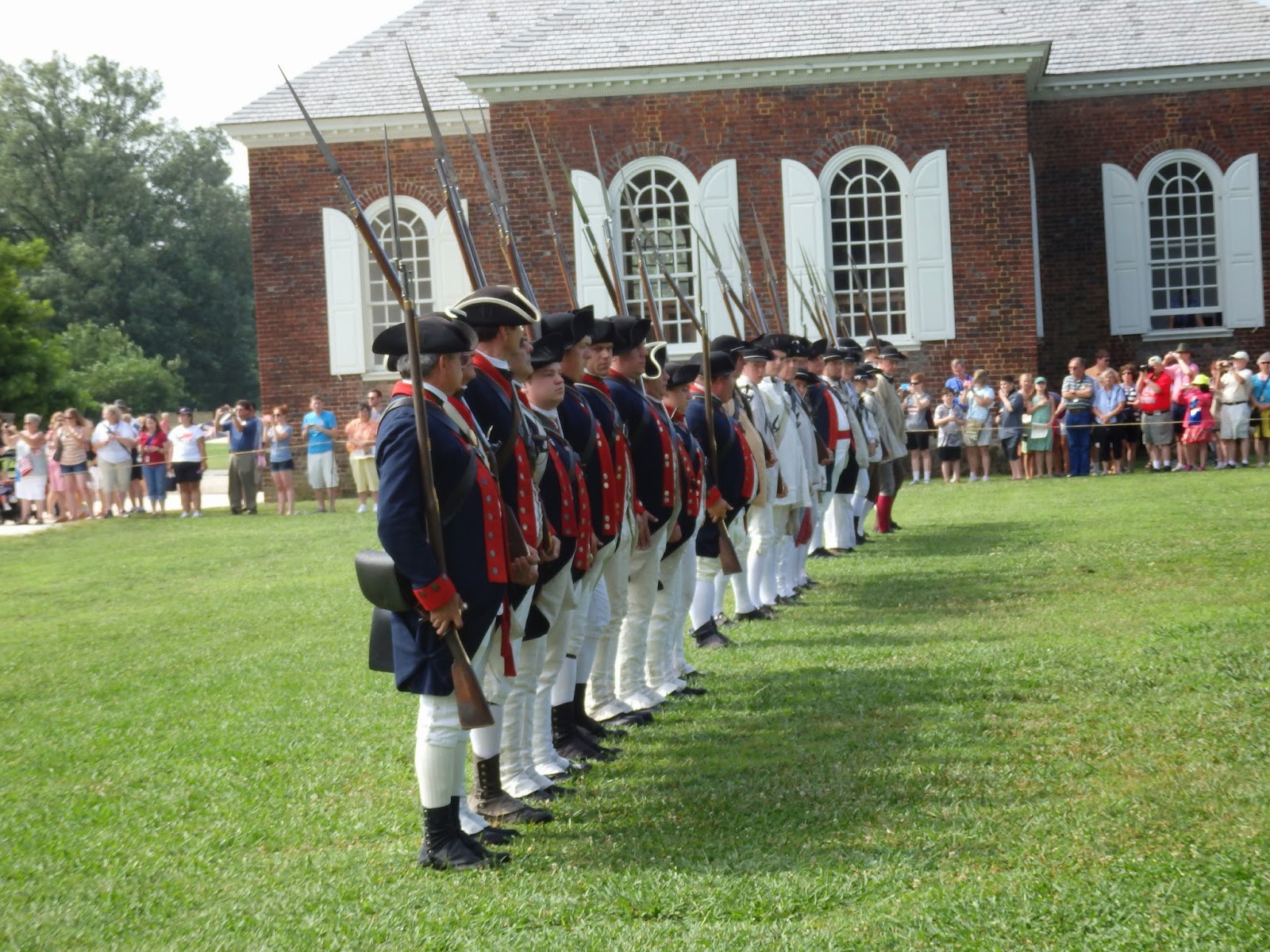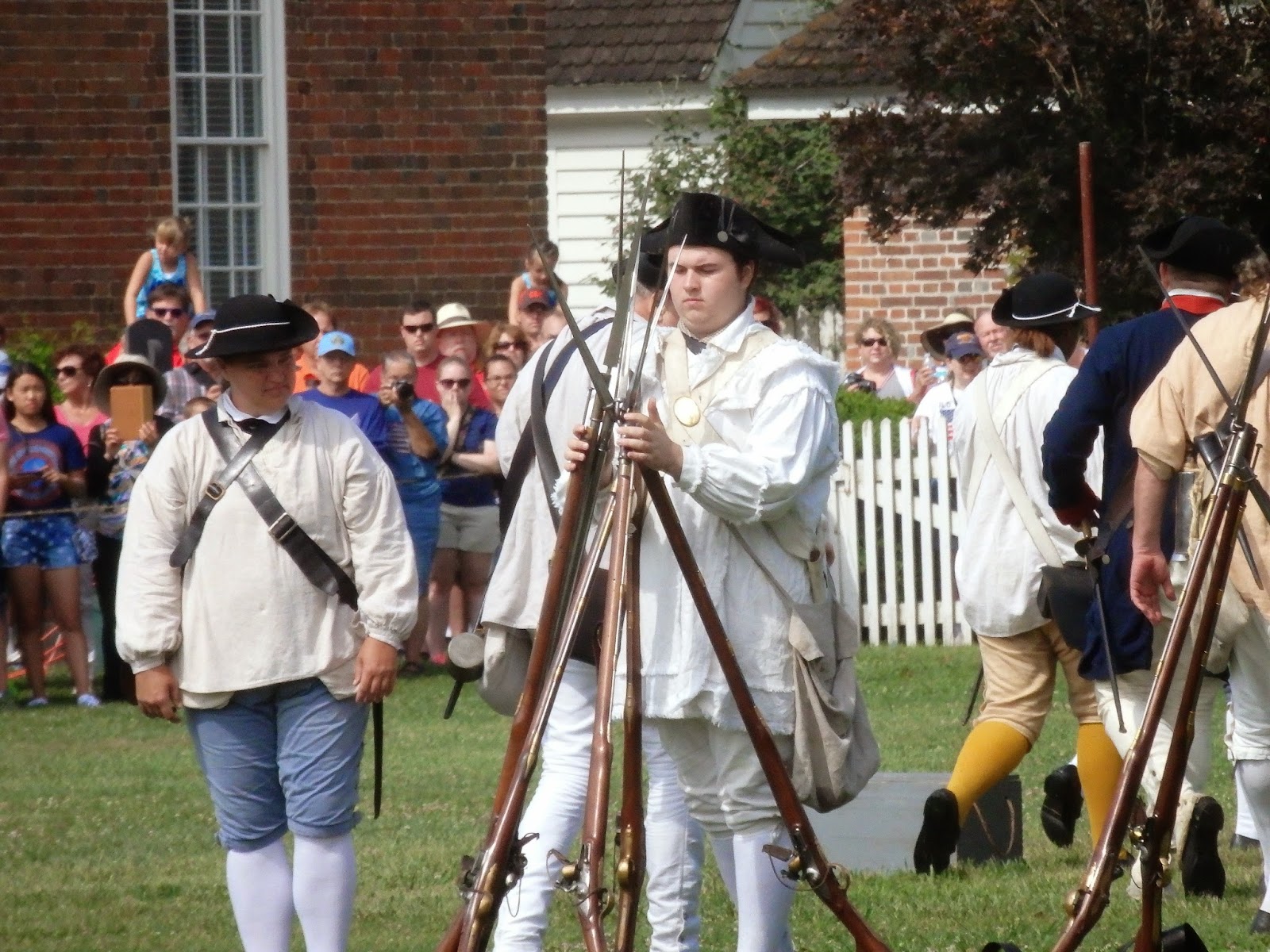 |
| Catalpa trees grow along both sides of the green. I've seen photos of the beautiful flowers they produce in the spring... |
 |
| but we were here during the time they were hanging with their fruit, 10" to 18" long, bean-shaped capsules. A local said they are also called a cigar tree. |
 |
| Another tree seen in abundance at Colonial Williamsburg is the crepe myrtle. |
 |
| They were just starting to flower. A local told us that they will flower all summer and are covered in blooms that range from white to red with some even in purple shades. |
 |
| The front hall of the Palace was adorned with dozens of swords, rifles and pistols. |
 |
| The Virginia crest surrounded by pistols. |
 |
| After the hall we were lead upstairs to the bedrooms. The bed curtains are made of cotton imported from England. Even the top made of wood, is covered in cotton. |
 |
| All the tours were led by people dressed as 1770's Williamsburg residents. |
 |
| One room was covered in red wallpaper. All the woodwork and doors had gold-painted edging. |
 |
| The stairs had inlay work. |
 |
| The ballroom where the governor and his guests danced through the night. |
 |
| Don't you just want this carpet in your home? |
 |
| I'm not sure what this piece was but it had a foot pedal on the front. |
 |
| Window in the dining hall. The wall color is not right in this photo.. I'm assuming it is because of the light coming through the window. |
 |
| This is the real color of the dining hall. Notice that the floors are not varnished. This is true of all the buildings at Williamsburg where the floor is not covered by carpet. |
 |
| We exited the building out the back where the gardens were very sculpted. |
 |
| The Thomas Everard House is one of the few original buildings in the town. |
 |
| This dish storage closet off the dining room was called a "bowfat", a corruption of the French buffet. |
 |
| This is a plate warming stand. It would hold a stack of plates by the fire to warm them before food was served. |
 |
| The flooring was made of fabric that was treated so it created a surface that was less porous and stain resistant. |
 |
| We were here on July 4th so we got to see the following Salute to the States. |
 |
| A large area of Market Square was cordoned off with these canon at one end. |
 |
| We heard fife and drums and three rows of soldiers marched onto the field. |
 |
| They were followed by the fife and drum marching band. |
 |
| The three groups of soldiers lined up in one row facing east. |
 |
| Then they all presented their rifles... |
 |
| armed them... |
 |
| put them all back to their shoulders when they were done arming the rifles.. |
 |
| Then fired them, one group at a time |
 |
| I believe they called it a Volley of Joy. |
 |
| Looks like a gun at the far end didn't fire correctly. |
 |
| Then the soldiers moved to the east and the band moved up. |
 |
| The soldiers put their rifles into pyramid forms. |
 |
| The flags of each of the colonies was walked onto the field. |
 |
| Notice the fife holders. |
 |
| The outfits were beautiful. |
 |
| The cannons created a lot of smoke. |
 |
| At the end of each song the drummers would raise their sticks, put them in their right hand and lower them to their sides. |
 |
| All parade participants leaving the field. |
 |
| Our last stop in Colonial Williamsburg was the Capitol. This is another reconstruction. |
 |
| There was a small moat running around the exterior. |
 |
| The tour first led us into the meeting room of the Virginia House of Burgess, the first legislative assembly of elected representatives in North America. |
 |
| The dais of the Speaker of the House. |
 |
| The highest court in Virginia met here lead by the Governor. |
 |
| There were lots of disfigured tree trunks in town. I think this is a Catalpa tree. |
 |
| From a distance it almost looks like it is two different kinds of trees wound together. |
 |
| We also found this grove of bamboo. |






































No comments:
Post a Comment